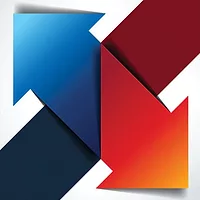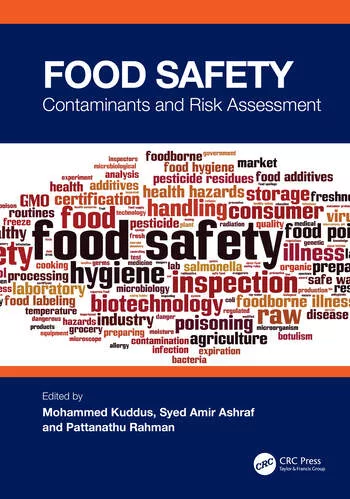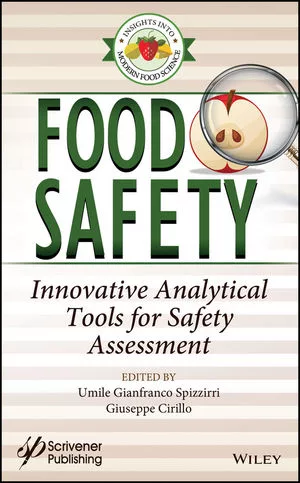Understanding the Differences between Hazard Analysis and Risk Assessment
For over 15 years of providing Hazard Analysis and Critical Control Points (HACCP) classes and other type of food safety training in the U.S. and abroad, I have realized that there is still confusion on the definition and usage of Hazard Analysis and risk assessment. Here, I present a summary of the differences between the terms Hazard Analysis and risk assessment, and provide a brief description of the origin of the terms to highlight the intended meaning and the fact that the results, or outputs, from performing Hazard Analysis and risk assessment also differ in nature. I also make the point that the usage and limitations of these terms should be better understood by food safety professionals involved in the development of food safety plans for the food industry, at least until new changes in the meaning of these terms are proposed.
There are several misunderstandings of food safety terms, something that is consistent across different type of participants of HACCP classes, whether they are working with different food commodities, or are students in food science/animal science/microbiology programs. One consistent feature among a large percentage of the participants is the thinking that “hazard” and “risk” are synonyms, or can be used interchangeably. This misunderstanding is not surprising, given the complexity of people’s perception of risk and the fact that, in many cases, perceived risks are not related to the actual risks associated to hazards known to harm humans.[1] Hazards are concrete agents that have been studied extensively in the last 40 years, yet they have a large variability in their ability to cause disease. Risk, on the other hand, is the probability that a hazard will occur in a food commodity, and encompasses a lot of uncertainty, mainly in relation to the prediction of the presence or distribution of the hazards in foods. To explain the differences in these terms, I have incorporated the use of a dice game that allows for interactive participation, so that food safety personnel and food safety professionals in charge of food safety programs understand the important of these terms and their use in food safety.[2] Confusing these terms will not help us understand more complex information that will be generated in the upcoming years related to the risk and hazards in food products, or help us understand risk reduction in terms of probability when incorporating control or preventive control measures.
The origins of the terms Hazard Analysis and risk assessment differ, and so are their results, or outputs. In the 1980s, with the creation of the National Advisory Committee for Microbiological Criteria for Foods (NACMCF), the seven principles of HACCP were finalized and the first HACCP principle became “conducting a Hazard Analysis.” This first principle was originally introduced in 1971 by Dr. Howard Bauman at a national food safety conference[3] that was jointly sponsored by the U.S. Food and Drug Administration (FDA) and the American Public Health Association. The initial principle was described as “identification and assessment of hazards associated with growing/harvesting to marketing/preparation.” Therefore, the establishment of the HACCP principles in the 1980s was just the continuation of a series of scientific discussions on how to assess the safety of food products through processing and preparation.
A Closer Look at HACCP
Hazard Analysis was adopted as the first principle of HACCP by NACMCF, and it meant the process of collecting and evaluating information on hazards associated with the food under consideration to decide which hazards are “significant” and must be addressed in the HACCP plan.[4] Hazards are analyzed by categories, chemical, biological and physical, and emphasis is put on “significant hazards,” those hazards that are important based on the likelihood of occurrence (probability) and severity (magnitude of loss). Thus, HACCP plans address primarily “significant hazards” to then come out with the implementation of CCPs to control those hazards. This definition of the hazard analysis process does not specify how the “collection” and “evaluation” of information are to be performed and it is usually up to the agencies regulating food commodities under current HACCP regulations, the Food Safety and Inspection Service of the U. S. Department of Agriculture and FDA, to periodically publish guidelines on what hazards should be addressed under the “Hazard Analysis” principle. The major food commodities under HACCP regulations—meat and poultry, juice and juice products and fish and fishery products—have some guidelines on how to address significant hazards.
For food commodities others than the commodities currently under HACCP regulations, there may be some guidelines put together by FDA, such as the guidelines to perform a Hazard Analysis for nut products (peanuts, pistachios, etc.). In other cases, trade associations representing food commodities have released some basic information on how to identify significant hazards. But the output from conducting a Hazard Analysis may vary, and the level of information gathered from this exercise varies extensively according to how in-depth the exercise was and how frequently the process is revised (reassessed) or updated if changes in processing occurs. For instance, when performing a Hazard Analysis to build a HACCP plan for a facility that manufactures a ready-to-eat product, Listeria monocytogenes should be considered a biological hazard likely to occur with a severity that warrants its inclusion as a “significant” hazard. Yet, other biological hazards, which may be of historical important in a particular facility, should not be ignored.
A comprehensive Hazard Analysis takes time and entails, in part, doing a thorough review of the scientific literature on the hazards that have been associated to a particular food product. In most cases, individuals working in the industry do not have full access to a large collection of scientific publications to even start compiling this type of information and therefore rely on help from other food safety professionals. It is not unusual to encounter very similar outputs, or results, of Hazard Analyses among companies that produce similar products. These results are somehow expected if the different Hazard Analyses were comprehensive. But in many cases, the lack of supporting documentation of how the Hazard Analysis was performed highlights the “sharing” of results of the Hazard Analysis in some sectors of the industry as the most probable cause of similar outputs. It is also surprising how often processing plants do not keep data to build their own historical facts related to hazards, especially physical hazards. I have seen the struggle that companies go through when addressing the re-appearance of physical hazards that were controlled, or supposed to be controlled, months before the re-occurrence, and there is no historical documentation to pinpoint any particular processing step.
What about Risk Assessment?
Risk assessment belongs to the “risk analysis” framework. The application of risk analysis to foods was introduced in 1995, through a joint expert consultation between the Food and Agriculture Organization of the United Nations and the World Health Organization. Then, the Codex Alimentarius Commission adopted risk analysis to evaluate the safety of foods. Risk analysis is defined as a process consisting of three components: risk assessment, risk management and risk communication.[5] Risk assessment is based on the current science for the hazards to analyze and includes hazard identification, hazard characterization, exposure assessment, and risk characterization.[5-7] In some cases, the dose-response assessment may also be determined. Therefore, the final output of the risk assessment, the final characterization of risk, is really different from Hazard Analysis. The only term in common between HACCP and risk analysis is “hazard identification,” which is, of course, the beginning of the study of any hazards: we need to identify them first.
On September 17, 2015, FDA posted the final rule on Preventive Controls for Human Food, one of the rules that makes up the Food Safety Modernization Act (FSMA) of 2011.[8] This final rule is an updated version of the original rule proposed on January 16, 2013,[6] and in this rule, the definitions of risk analysis and risk assessment were reiterated under section 103(c)(1)(C) of FSMA, a session that calls for “science-based risk analysis.” However, the Agency is applying the Codex definitions to the “extent possible,” so that the Secretary considers the results of the science-based risk analysis [103(c)(1)(D)] when deciding to exempt certain facilities from the requirements in section 418 of the Food Druga and Cosmetic Act.[6] In this way, the agency can focus on risk of activity/food combinations, not only food commodity, to grant exemptions, or better allocate inspection resources (e.g., high-risk activity/food).
Microbial risk assessment is much newer and borrows terms and definitions from the work on chemical risk assessment that was begun several decades ago. However, the application of risk analysis, in particular risk assessment, to microorganisms has faced several challenges, some originating from the variability in the response of the host to the pathogen (immune statues, etc.), and some due to the variability in food matrices (liquids, solids, etc.). Therefore, there are few guidelines that can be universally applied to different biological hazards in foods. A key component of risk assessment is the use of quantitative data when available. Transparency is also a term commonly used by scientists doing risk assessment. The ideas with “transparency” is to provide for “methods and assumptions” that can be clearly understood by other scientists. It is important to remember that performing risk assessment entails a great deal of computer work with specialized software to help analyze the different type data and model different scenarios. A comprehensive “risk assessment” will ensure a comprehensive analysis of the most current data related to a hazard and will result in an output that will provide several opportunities for control. But these type of data are not easy to come across.
As stated, the output of a comprehensive risk analysis is different from the output of Hazard Analysis, and it is not only a mere ranking of risks for different hazards.[9] The results will be much more complex, reveling information that maybe unique for a particular hazard and food commodity. Therefore, a risk assessment can help find the processing steps at which hazards may be reduced for a more comprehensive, multistep approach to the control of hazard. This multi-step approach is known as the “hurdle” approach.[10]
Some Clarification
Now that we have reviewed the definitions of Hazard Analysis and risk assessment, we can understand that the terms can be confusing, but have separate and different origins. None of these two terms, however, includes an actual definition of risk; therefore, when individuals perform a Hazard Analysis and make decisions of “likelihood of occurrence,” they are actually assessing the probability that a hazard will occur (risk) but without having access to more complex data (exposure assessment, dose-response, etc.) or the latest software tools that help scientists performing risk assessment come out with a final characterization of the actual risk. Therefore, by just focusing only in general occurrence, some hazards may be underestimated.
Why is it important to understand Hazard Analysis and risk assessment? There are several reasons. The most important, yet more difficult, step in organizing a HACCP plan is to recognize the “potential” hazards in the product, and then categorize them to come up with the “significant” hazards to address by CCPs. This approach, coming from HACCP, may not be the best approach to control foodborne hazards. As a matter of fact, more and more studies support the concept that the use of “hurdles,” many different barriers, may be a more efficient approach for controlling hazards, especially biological hazards, throughout the production and processing of foods. The latest regulations by FDA calls for “preventive controls” and recognizes that more than one control may be necessary to ensure safety.
The proper use of the terms also help understand what we are trying to present. For instance, in a recent article we can read:
Under the GCP [Good Consumer Practices] program, potentially hazardous foods would be required to be identified via risk assessment and then labeled using a standard, graphical labeling scheme.[11]
After reading the full article, one understands that the authors most probably meant that once hazards are identified in a food product, that product would require a labels stating “potentially hazardous foods.” If we replace the words “risk assessment” by “Hazard Analysis,” we may be using the terms more properly. Sometimes individuals tend to use them interchangeably,[12] and some auditors may tend to confuse these terms too. When an auditor ask you to perform a “risk assessment,” or somebody visits your processing facility, observes and then provide you a written “risk assessment,” you know now they meant “Hazard Analysis.”
I want to emphasize the term “potential hazards” because a Hazard Analysis should not be done just only once, or just once a year, to re-assess a HACCP plan. Analyzing food processing steps for potential hazard should be done on a continuous basis in order to prevent the appearance of environments that could introduce a hazard that was not previously identified. Some of the examples that we have seen in the past 10 years are, for instance, the high level of contamination of cantaloupes with L. monocytogenes that resulted in an unnecessary number of deaths, or the sporadic, but important, contamination of peanut butter with Salmonella. Individuals with experience in the identification of foodborne hazards, who are familiar with how hazards enter and survive in food processing environments, can help predict the occurrence of opportunistic biological hazards, or the increase in number of hazard that may be already in the environment.
Another reason to recognize the differences between Hazard Analysis and risk assessment is to be able to understand new terms that will be generated to address the study of hazards in foods. We continue the search for alternative approaches to intensify the use of current production land and to expand the use of land for food production. This expansion has already been associated with an increased risk of acquiring zoonotic diseases, those diseases passed to humans by animals.[13] Most of the emerging diseases are viruses and those transmitted by foods are bringing a unique set of challenges, not only just basic identification but also interventions to control them. In addition, the continuous re-thinking of the ways we harvest and process foods will undoubtedly create opportunities for biological hazards to find new ways into foods. To cope with the emerging needs, it is important that we, at least, understand the present use of these terms, Hazard Analysis and risk assessment, and recognize how they have helped us understand how hazards can be controlled in foods. Only then will we be able to do more of what we don’t do a lot now: prevent hazards from contaminating foods.
Omar A. Oyarzabal, Ph.D., is an associate professor of food safety at the University of Vermont.
References
1. Slovic, P. 1987. “Perception of Risk.” Science 236:280–285.
2. Oyarzabal, OA. 2015. “Using Dice Games to Teach Hazards, Risk and Outcomes in HACCP Classes.” J Extension 53(4):4TOT7.
3. www.foodprotect.org/about/history/.
4. National Advisory Committee for Microbiological Criteria for Foods. 1998. “Hazard Analysis and Critical Control Point Principles and Application Guidelines.” J Food Prot 61:1246–1259.
5. ftp.fao.org/es/esn/food/Risk_Analysis.pdf.
6. Federal Register. 2013. “Current Good Manufacturing Practice and Hazard Analysis and Risk-Based Preventive Controls for Human Food.” 78(11):3646–3824.
7. Oscar, TP. 2012. “Food Risk Analysis.” In Microbial Food Safety: An Introduction, edited by OA Oyarzabal and S Backert, New York: Springer Verlag.
8. federalregister.gov/a/2015-21920.
9. Buchanan, RL and EN Williams. 2013. “Hazard Analysis and Critical Control Point Systems: Use in Managing Microbiological Food Safety Risk.” In Food Microbiology: Fundamentals and Frontiers, 4th ed., edited by MP Doyle and RL Buchanan, Washington DC: ASM Press.
10. Leistner, L. 1978. “Hurdle Effect and Energy Saving.” In Food Quality and Nutrition, edited by WK Downey, 553. London: Applied Science Publishers.
11. www.food-safety.com/magazine-archive1/aprilmay-2015/good-consumer-practices-are-necessary-to-further-improve-global-food-safety/.
12. www.linkedin.com/pulse/food-safety-audits-do-we-have-system-backwards-bob-whitaker.
13. Pulliam, JR, et al. 2012. “Agricultural Intensification, Priming for Persistence and the Emergence of Nipah Virus: A Lethal Bat-Borne Zoonosis.” J R Soc Interface 9(66):89–101.
Looking for quick answers on food safety topics?
Try Ask FSM, our new smart AI search tool.
Ask FSM →







